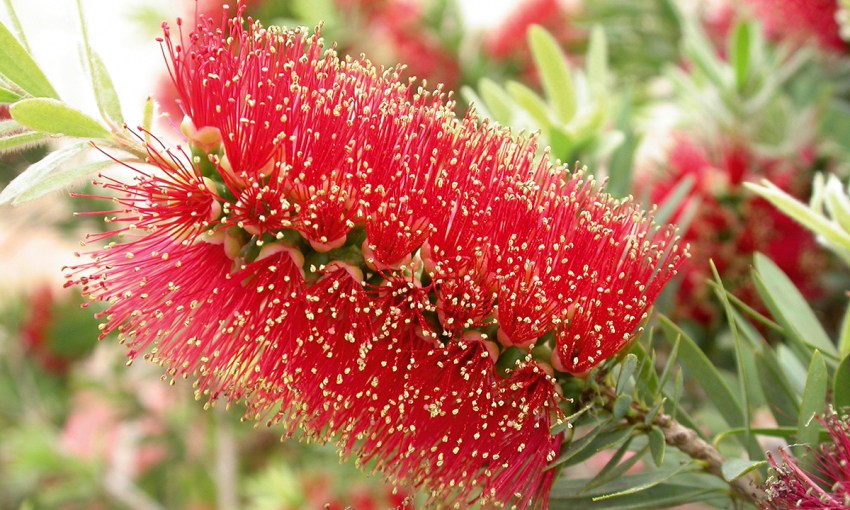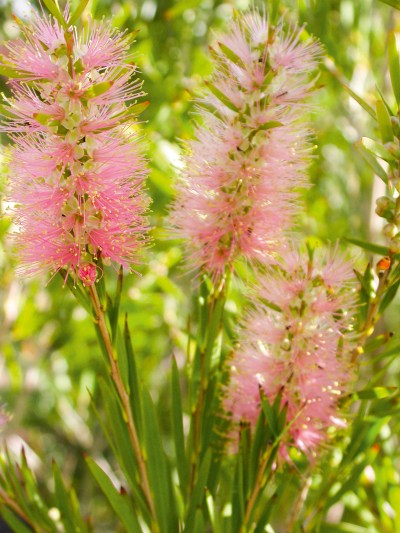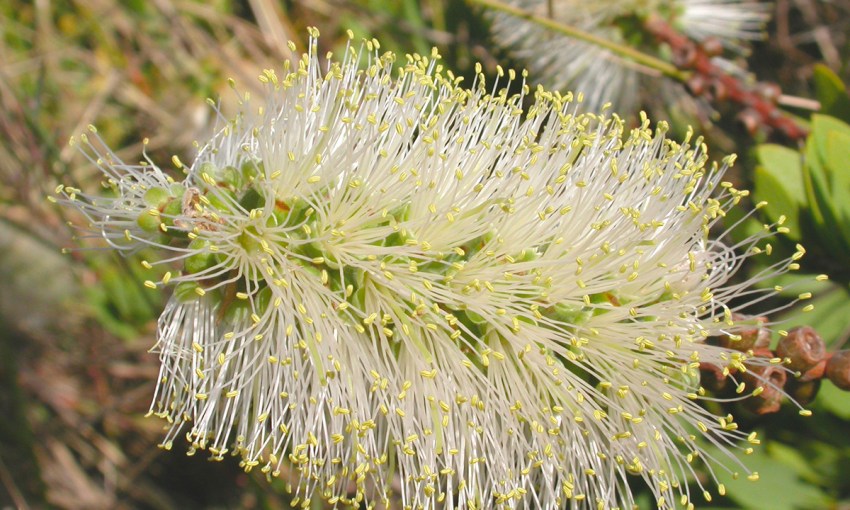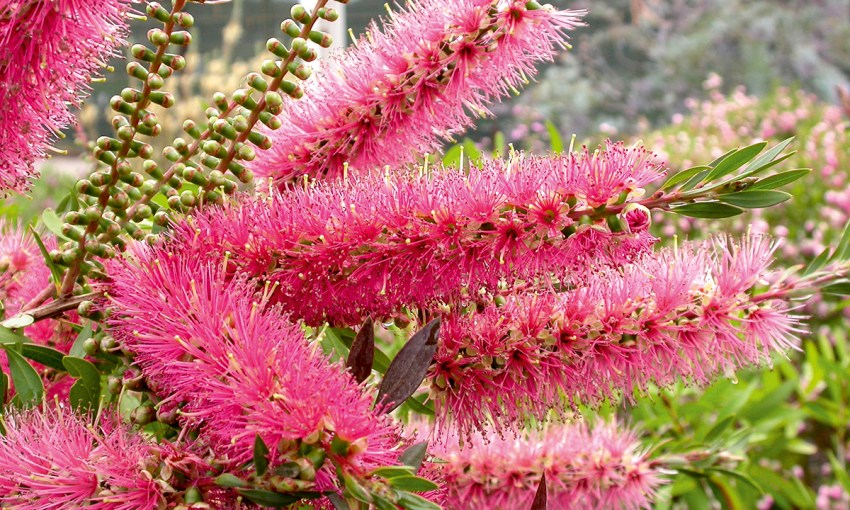Plant a colourful callistemon, or bottlebrush, to attract some wildlife to your garden.
In the garden: Bottled colour
If you are keen to attract birds, bees and butterflies to your garden, plant a beautiful callistemon and in no time you will have them taking care of any unwanted pests as well as enjoying the nectar from the bottlebrush flowers.
The common name bottlebrush is derived from the shape of the flower. They are members of the genus callistemon, which belongs to the myrtaceae family and is closely related to paperback melaleuca that also has the same shaped flower. Their botanical name comes from the Greek word “kallos” meaning beauty and “stemon” referring to the stamen which is the eye-catching part of the flower.
Bottlebrushes grow well in our climate and make an excellent street tree, as well as a good tall shrub or small tree for the home garden. They’re extremely hardy, frost tolerant, require very little maintenance and most varieties don’t need a lot of water. Some types do grow along creek beds or areas that are prone to flooding.

These woody shrubs range in height from about a half a metre to some varieties growing up to four metres tall. Generally when we think bottlebrush we tend to think red flowers, but they come in a whole range of colours from cream, green, pink, red, purple, mauve and burgundy; all attracting nectar-feeding birds such as honeyeaters as well as bees and other insects.
The flower spikes form in spring and summer and are made up of a host of individual flowers. In some cases, a second flush may appear in autumn. The bird-attracting pollen forms on the tip of the long coloured stalk and this is what gives the flower spike its colour and distinctive shape. After the flowers drop off, a small woody fruit containing thousands of seeds appear in its place and these can remain on the bush for years. Fire can stimulate these seed pods like some other Australian native plants.
Bottlebrush grow well in most soil types, as long as the drainage is good, but they do prefer a non-alkaline soil and will produce the brightest flowers if planted in a warm, sunny spot. A light pruning after flowering will keep the bushes neat and in shape and a low phosphorous fertiliser can be applied in spring and again in autumn. Tip-prune when new growth appears, although you may be sacrificing flowers if you leave it too late.

Bottlebrushes are generally not susceptible to root rot and this makes them the ideal plant for hedges or as a screening plant to cover an unsightly corner in the backyard. Mulch around the plant to retain moisture in the soil and to help reduce weeds in the area.
Some good varieties to grow in the home garden include the Callistemon viminallis, or Captain Cook, which is a neat and compact but large shrub with red flowers.
The Callistemon Matthew Flinders is a new dwarf variety with dark red flowers and mid-green foliage. Low growing, it makes a good plant for a rockery.
For a white variety, plant the White Anzac which produces flowers in springtime. This one tends to become straggly if not pruned, so cut it back harshly after it finishes flowering.
Callistemon Mauve Mist is quite an unusual colour but is a compact small-to-medium shrub suitable for the average-sized garden.
Callistemon Purple Splendour is another compact variety that has bright purple flowers in springtime. This variety often flowers twice a year; in spring and mid-autumn.
Another dwarf bottlebrush is the Callistemon Little John variety. This has dark red flowers and blue-grey foliage, which is very attractive.
The Prolific variety has small bright red flowers and makes an excellent screening plant or feature plant.
Propagation of bottlebrushes is by seed or hardwood cuttings taken in late spring. The seeds can be taken from the bush when they are mature and dry. Plant them in sharp sand and keep the soil moist until the seedlings appear. Plant out in autumn, winter or spring. Cuttings will produce roots after a few weeks if planted in good potting soil and kept moist.

This story first appeared in the Summer 2018 issue of SALIFE Gardens & Outdoor Living magazine.



